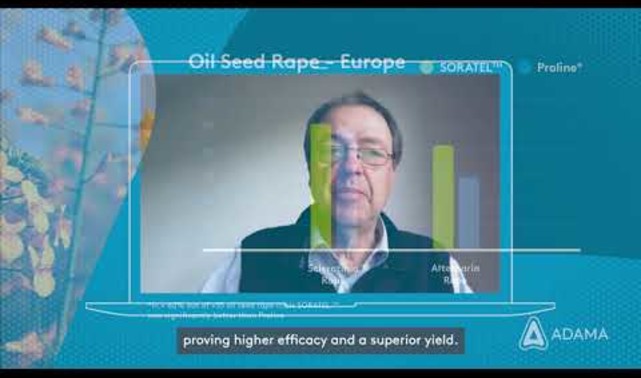
Powering up prothioconazole
Powered by Asorbital Formulation Technology

Unique formulation
Solvent system improves activity within the plant

Fully optimised
Rainfast: crops remain protected for longer.

Superior disease control
Consistent performance in a range of conditions.
Asorbital formulation technology
AsorbitalTM formulation technology takes the performance of prothioconazole fungicides to the next level: with an inbuilt adjuvant which enhances uptake into the leaf, and a special solvent system which ensures the active ingredient reaches and protects every part of the leaf, ADAMA’s unique formulation consistently outperforms the market leading prothioconazole fungicide.
AsorbitalTM fungicides also boast improved levels of rainfastness, so crops remain protected for longer.

Two straight prothioconazole products, one unique formulation
Crop Information
| Crop | Diseases controlled |
| Wheat | Eyespot, septoria (leaf and glume blotch), powdery mildew, yellow rust, brown rust*, tan spot*, ear disease complex – fusarium ear blight* (reduction of deoxynivalenol) and reduction of sooty moulds |
| Barley | Eyespot, powdery mildew, yellow rust, brown rust, ear disease complex – fusarium ear blight* and reduction of sooty moulds, rhynchosporium and net blotch |
| Rye | Eyespot, powdery mildew, brown rust and rhynchosporium |
| Oats | Eyespot, crown rust and mildew |
| Winter OSR | Light leaf spot*, phoma leaf spot, stem canker, sclerotinia stem rot |
(* provides moderate control)
Doses and application timings
| Crop | Max individual dose (l/ha) | Max total dose (l/ha) | Latest application timing |
|
Winter & spring wheat Winter rye |
0.8 | 2.4 | Before milky grain ripe stage (GS 70) |
|
Winter & spring barley Winter and spring oats |
0.8 | 1.6 | Before beginning of flowering (GS 61) |
| Winter oilseed rape | 0.7 | 1.4 | Full flowering (BBCH 65) (PHI 56 days) |
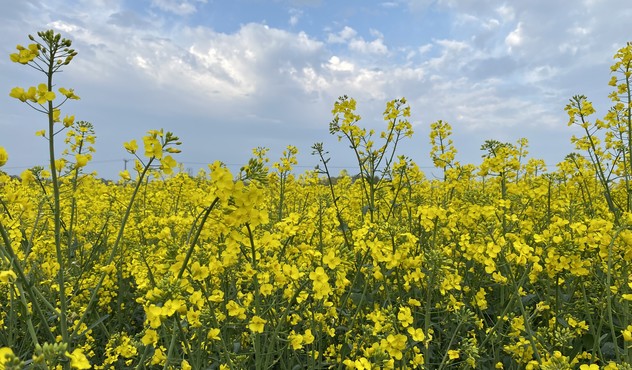
Powered by Asorbital
Comprising a unique combination of two solvents and an adjuvant to help with product uptake and distribution, ADAMA’s novel Asorbital technology was developed at our global R&D facility Neot Hovav in Israel.
This state-of-the art facility is where ADAMA’s team of more than 100 ‘formulation mastery’ researchers and chemists develop and fine-tune new crop protection products which address the needs and challenges faced by commercial farmers around the globe.


Independently proven benefits
Independent laboratory trials carried out by BIOtransfer (France, 2021) have shown that the uptake of ADAMA’s AsorbitalTM formulation is quicker and more effective against septoria compared to the market leading prothioconazole product.
In the trial, a standardised amount of the test products was applied to the basal part of wheat leaves, with the apical part of the leaves left untreated. The apical part was then removed, and the basal part washed to remove any remaining active ingredient on the leaf surface. Both parts were then inoculated with septoria and incubated under saturated, humid conditions. Septoria lesion lengths were then assessed at 21 and 28 days post inoculation, with the results reflecting the quantity of active ingredient present in each part of the leaf: less disease in the basal part indicated better penetration into the leaf; less disease in the apical part indicated better migration from the basal part to the apical part.
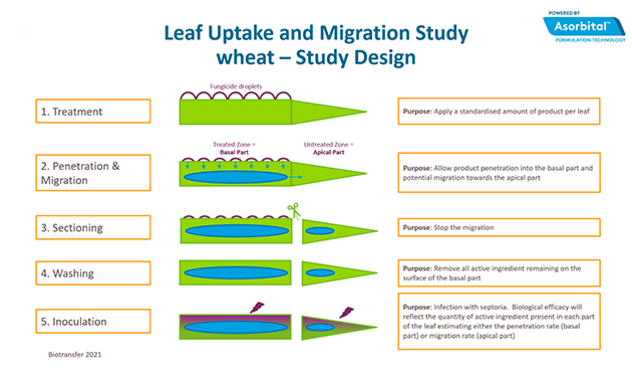
Septoria lesion lengths were assessed at 21 and 28 days post inoculation, with the results reflecting the quantity of active ingredient present in each part of the leaf:
- Less disease in the basal part indicated better penetration into the leaf
- Less disease in the apical part indicated better migration within the leaf
dpi = days post inoculation
hAA = hours after application
ADAMA’s AsorbitalTM formulation is taken up more quickly than the market leading prothioconazole product, resulting in better protection against septoria (Source: Independent laboratory trials, BIOtransfer, France 2021)
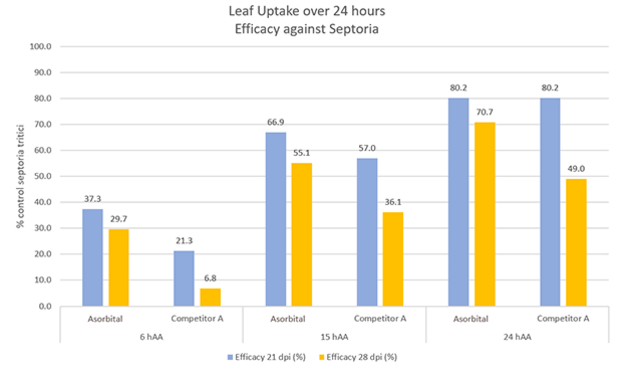
hAA = hours after application
The ADAMA formulation also offers better protection against septoria in non-treated leaf areas thanks to its superior movement within the leaf. (Source: Independent laboratory trials conducted by BIOtransfer, France)
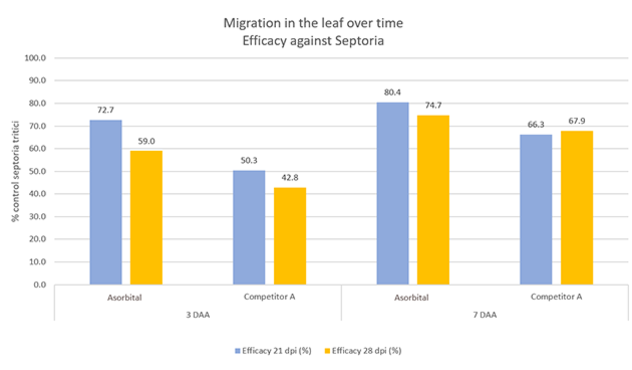
Longer lasting protection
Laboratory trials have also shown that the AsorbitalTM formulation offers better rainfastness than the market leading prothioconazole product.
In this trial, wheat plants were treated at the 2-3 leaf stage and subjected to 40mm of simulated rainfall at 1 or 3 hours after treatment. The plants were inoculated with septoria 24 hours later, and disease levels assessed after 21 days. In both cases, the AsorbitalTM formulation achieved better control of septoria compared to the market leading product.

Enhanced disease control
Extensive trials in the UK and Europe have shown that the improved uptake and migration of ADAMA’s AsorbitalTM formulation results in significantly better control of all target diseases compared to other prothioconazole products.
Under UK conditions, ADAMA’s AsorbitalTM formulation provides improved control of septoria, yellow rust and fusarium in wheat, with a 13% uplift in control of fusarium compared to the market leading prothioconazole product.

ADAMA’s AsorbitalTM formulation also delivers improved control of rhynchosporium and net blotch in barley.
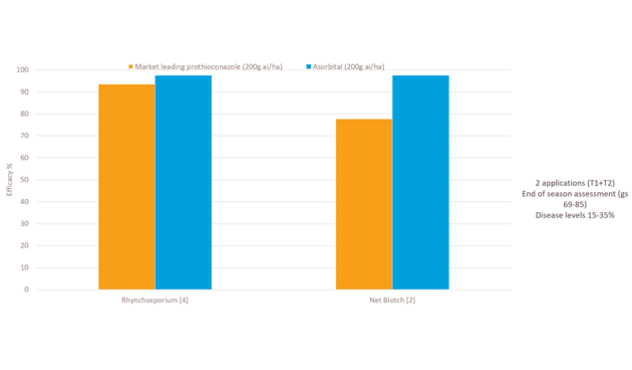
Safe for crops and easy to use
In addition to providing improved levels of disease control, ADAMA’s prothioconazole fungicides are also safe and easy to use:
- Extensive trials conducted throughout Europe have shown that the AsorbitalTM formulation has no phytotoxicity effect and is safe to use in all cereal and oilseed rape crops .
- Good compatibility with tank mix partners makes AsorbitalTM fungicides easy to incorporate into spring and autumn spray programmes.
ADAMA’s AsorbitalTM formulation provides similar improvements against sclerotinia (+18% control) and alternaria in oilseed rape.



